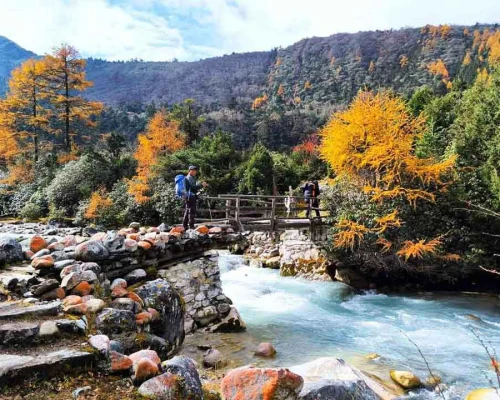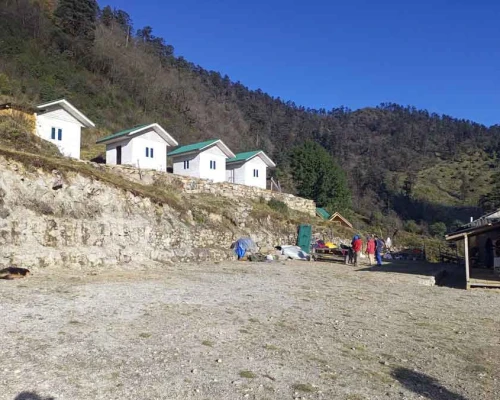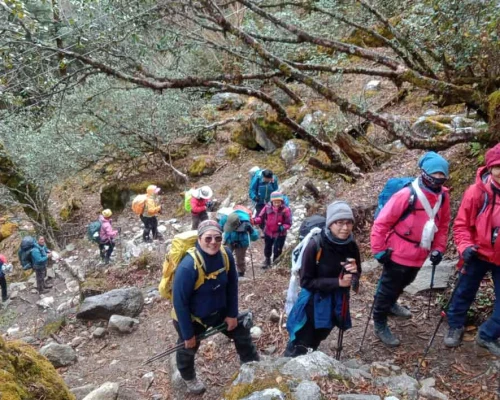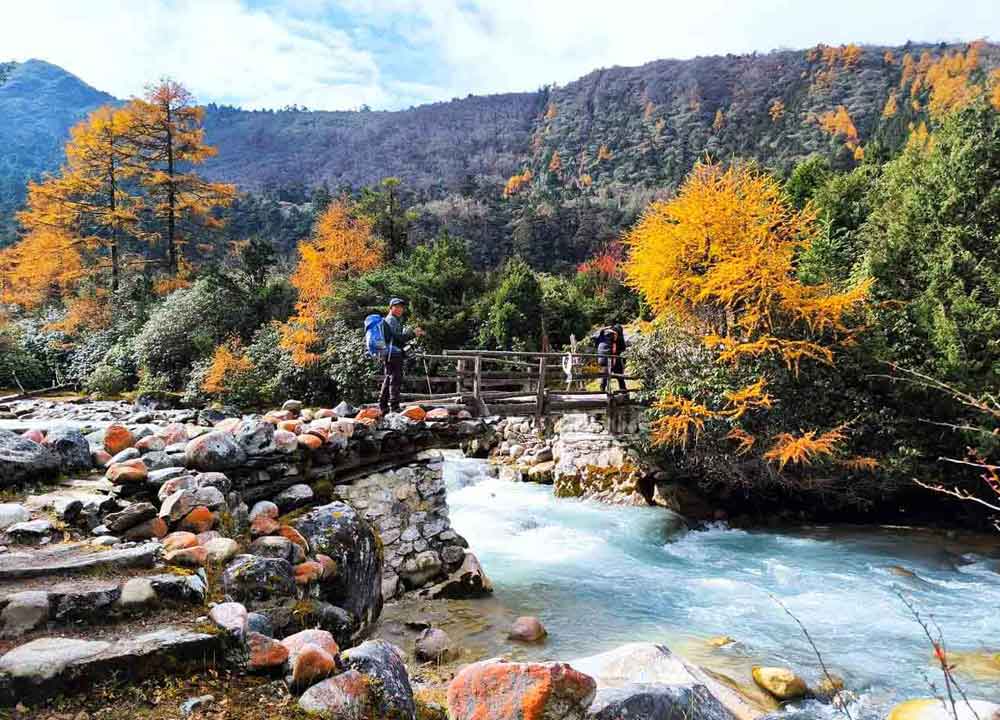
The Kanchanjunga South Base Camp trek is another good option for a short trek without reaching North Base Camp. This trek can be done in a perfect clockwise circle with fantastic views. The world's third-highest peak, Kanchenjunga (8,586 meters/28,169 feet), stands majestically over the Indian and Nepalese border in the northeast corner of Taplejung District in Nepal. Kanchanjunga trekking is less crowded than Everest, Annapurna, Manaslu, and Langtang region. The homestay or lodges are very normal but serve everything that the travelers need. The Kanchanjunga region has a special Conservation project, which is protecting some endangered wildlife such as the red panda and Himalayan black bear, snow leopard, Tahr, Musk deer, and different species of birds in the Himalayas.
The south base camp trek is shorter, lower in elevation, and less strenuous than the north base camp trek. However, the trekkers are equally awarded with similar types of natural and cultural uniqueness. The south base camp journey takes you through the subtropical lowland landscape, farming terraced fields, rhododendrons and alpine forests, stunning glaciers, and several spectacular snow-capped mountains scenery from Nepal to Sikkim India.
The Kanchenjunga South Base Camp trek is an enthusiastic destination for the typical lifestyle of Tibetans, nature, various Flora and Fauna, wildlife, culture, and incredible landscape into the deep Himalayan Highland. It is one of the most beautiful moderate to strenuous excursions in the eastern part of Nepal. Throughout this trek, you will be trekking in the isolated mountain region beginning from 2000 meters and ascending to a maximum of 4610 meters, that makes your holidays a memorable souvenir in a lifetime. This trekking route does not require climbing or mountaineering abilities but requires perfect physical and mental fitness. We strongly recommend starting in a clockwise direction for this trek due to the easier climbing, geographical conditions, altitude acclimatization, landscape and views, good hotels by the end with perfect hot shower and flexible riding existing.

The Kanchjunga South Base Camp trek turn towards Selele pass direction from Ghunsa by skipping the way to Northern Base Camp. We will cross five impressive passes, including the famous Se-Le-Le pass (4290m) and descend to Cheram. The trail crosses numerous ridgelines, landscapes with incredible views of the Himalayas, lush forests, hot temperatures, and farmland ascending and descending to the ending point of your trek.
Best time to trek into the Kanchanjunga
The ideal seasons for Kanchenjunga trekking are spring (March to May) and autumn (September to November).
Spring (March - May): Offers pleasant weather, blooming rhododendron forests, lush greenery, and a chance to spot wildlife. Temperatures in the lower regions are around
Autumn (September- October): Features stable weather, clear skies, and excellent visibility for stunning mountain views. The air is crisp and clean after the monsoon, making for great photographic opportunities.
We do not recommend these seasons:
Monsoon (June to August): Heavy rains make trails slippery and prone to landslides.
Winter (December to February): The temperature in winter is extremely cold, and there will often be heavy snowfall, which makes the trek difficult and hazardous.
Permits & Regulations
Kanchenjunga Conservation Area Project (KCAP) Entry Permit: Costs around NPR 2,000 per person.
Restricted Area Entry Permit (RAP): Costs USD 10 per person per week. This permit must be processed through a registered local trekking agency in Nepal and requires a minimum of two trekkers in a group.













 The trail goes downhill and turns into a steep and long hike. We pass over a landslide-prone area leading to Lasiya Bhanjyang. The trails around this area are unrecognizable due to the animal's pasture; however, follow the wider and marked trail.
The trail goes downhill and turns into a steep and long hike. We pass over a landslide-prone area leading to Lasiya Bhanjyang. The trails around this area are unrecognizable due to the animal's pasture; however, follow the wider and marked trail.

